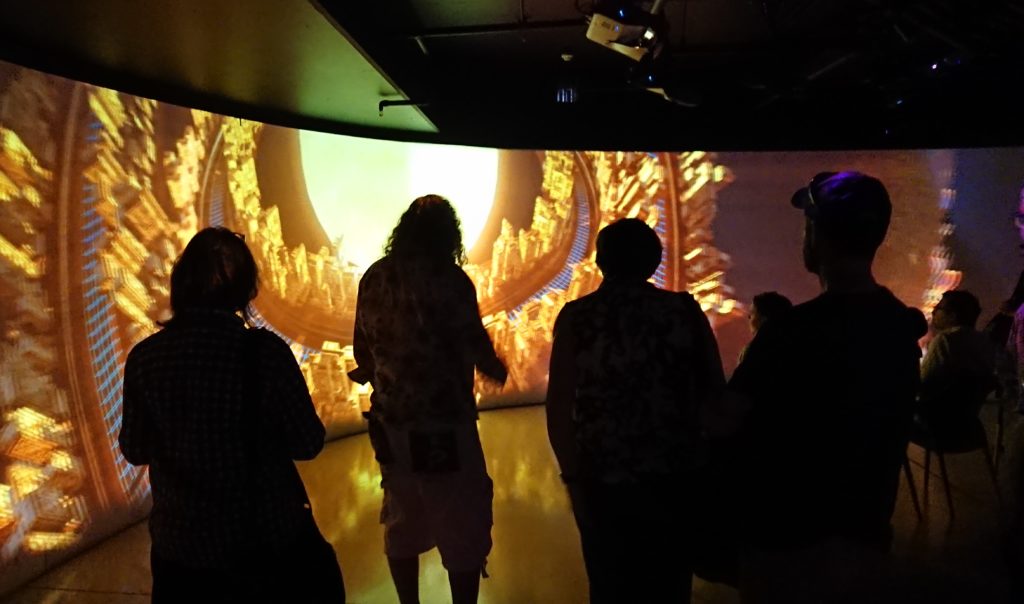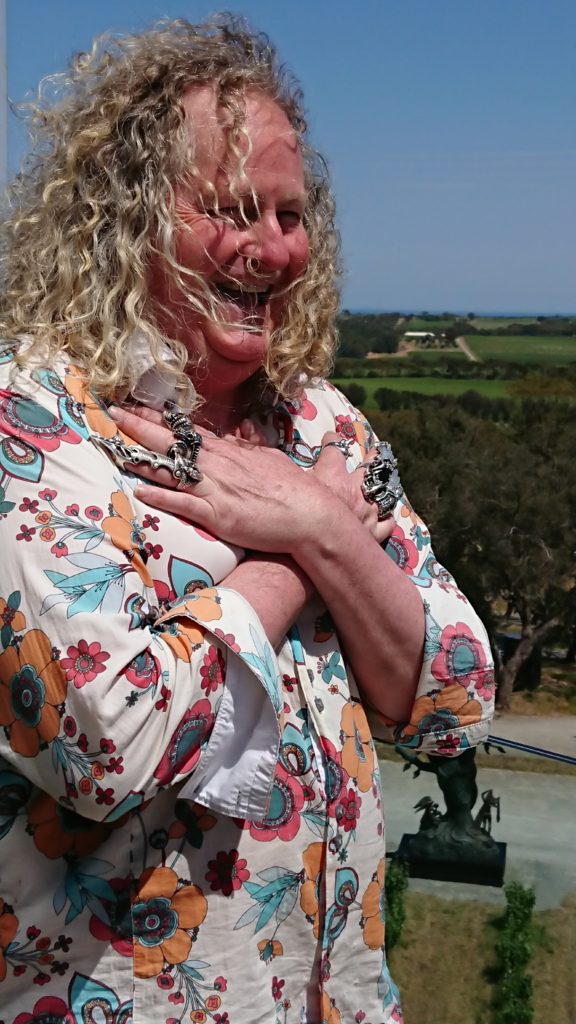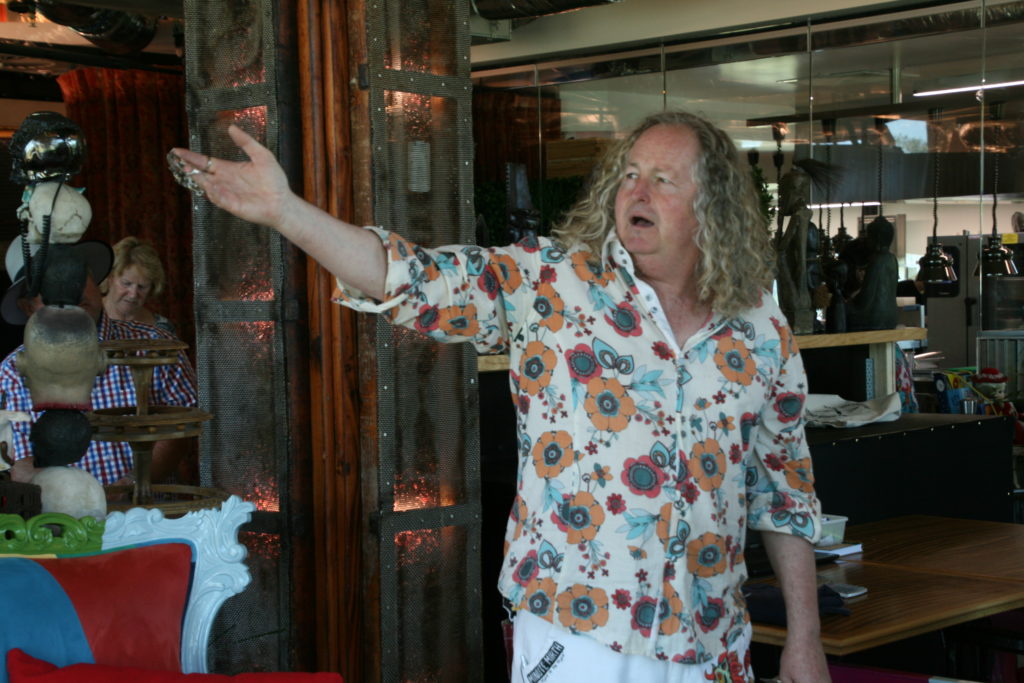
Welcome to the weirdest winery in the world…
Peter Ranscombe steps inside the d’Arenberg Cube and finds that, while the architecture may be quirky, the wine is sublime.
THERE aren’t many wineries that can boast of having their own “alternative realities” museum, Rubik’s cube-like visitors’ centre or Salvador Dali exhibition. But, then again, there aren’t many wineries like d’Arenberg.
The “d’Arenberg Cube” rises up from the vineyards of South Australia’s McLaren Vale region like a spaceship that’s just landed from another planet.
Inside, guests can take a tour around its “museum”, a contemporary art gallery that tells the story of grapes and wines in an unique format, with giant immersive screens, manikins dressed in wacky costumes and even a machine that takes “low-intervention” wine to the next level by producing vino on its own without any human interference.
Downloading an app onto their mobile phones allows guests to read about the exhibits in all their weird and wonderful detail.

On the floors above, visitors can join tutored tastings, dine in the restaurant or – until May – be impressed and perplexed in equal measure by 23 Dali sculptures.
The cube has not only won awards for its design but has also boosted visitor numbers to the wider area since it opened in 2017.
It’s the brainchild of chief winemaker Chester Osborn, whose family has been tending vines in the the vale for more than 100 years.
Yet, for all his bright shirts and Dungeons & Dragons-style rings, there’s nothing weird about Osborn when it comes to the taste of his wines.

Osborn’s entire ethos is centred around capturing the character of each vineyard that his family owns or farms, which are all certified as organic and biodynamic.
Once the fruit is harvested, it all passes through traditional basket presses – which Osborn believes adds to the character of his wines – with the black grapes squashed under foot instead of using machines.
What’s perhaps most impressive is that each parcel of fruit is turned into wine separately in 260 small-batch fermenters, with the parcels only brought together at the end of the process for final blending.
That allows d’Arenberg to market a massive selection of wines, each made in small quantities, with Osborn’s creative streak coming through once more in the names of the bottles, which range from “The Blind Tiger” and “The Old Bloke And The Three Young Blondes” through to “The Pickwickian Brobdingnagian” and “The Apotropaic Triskaideaphobia”.

Both the weirdness in the winery and the greenness in the vineyards reminded me of Raymond, the Napa Valley estate run by flamboyant Frenchman Jean-Charles Boisset, whose wardrobe could give Osborn’s a run for its money.
Where the Californian and Australian styles differ though is in the taste of the wines – Osborn avoids any obvious oak influences and instead tries to capture long-lasting tannins, which give his wines the ability to age.
While those assertive tannins mean that some of d’Arenberg’s red wines are hard work when they’re young and served without food, it does make them an excellent match for meats such as steak, venison or lamb.
Four of the best from d’Arenberg
Pollyanna Polly (£20.05, Vinvm)
A sparkling wine made in the neighbouring Adelaide Hills region from a blend of 60% chardonnay, 35% pinot noir and a 5% splash of pinor meunier. There’s a great balance between the fresh acidity and the concentrated pear and green apple flavours, with its rounded sweetness coming from the ripeness of the fruit instead of the addition of a high sugary dosage.
The Pickwickian Brobdingnagian 2013
My favourite example from our tasting with Osborn of 10 plots of shiraz, all made in small batches of between six and 10 barrels, with some going on to become part of the blend for The Dead Arm Shiraz, the winery’s flagship red. I can picture Mr Pickwick puckering his lips at the teeth tinglingly-ripe tannins as he tucks into his steak. Roast meat, warm fur and violets on the nose lead into lots of black fruit on the palate, with a sprig of redcurrant and lots of milk chocolate on the finish.
The Old Bloke And The Three Young Blondes 2013 (A$200, d’Arenberg; 2011: £100-110, Villeneuve Wines, Wine Rak)
The “old bloke” in question is either shiraz or Osborn himself, while the “three young blondes” are the white roussanne, marsanne and viognier grapes used to add a floral lift to the red wine – just as in parts of the Rhone valley in France – but could equally be Osborn’s daughters. There’s a finesse to the tannins in the wine that really appealed to me, along with tonnes of black fruit aromas and flavours and fresh acidity.
The Beautiful View 2013 (A$105, d’Arenberg)
It may be most famous for its shiraz, but d’Arenberg also makes some excellent grenache, including The Beautiful View, which comes in a slightly darker shade than its sibling, The Blewitt Springs. Spun sugar, sooty wood smoke and raspberry jam come together on the nose, before launching into tingling acidity, cranberry and a salty tang on the palate, along with the winery’s hallmark grippy tannins.
Peter Ranscombe offsets the carbon dioxide emissions from the international flights he takes for his wine trips by paying the Trees For Life charity to plant Scots Pines and other native species near his birthplace in the Highlands – find out more at http://bit.ly/SF_Trees
Wine Australia, the national marketing body that took Peter Ranscombe to visit d’Arenberg and a host of other wineries, is holding Scotland’s biggest Australian wine tasting at The Balmoral Hotel in Edinburgh on Monday 27 January. More than 350 wines from 60 producers will be on show. For more information about tickets please visit https://www.australianwine.com/en-AU/our-story/events/australian-wine-tasting-edinburgh
TAGS

